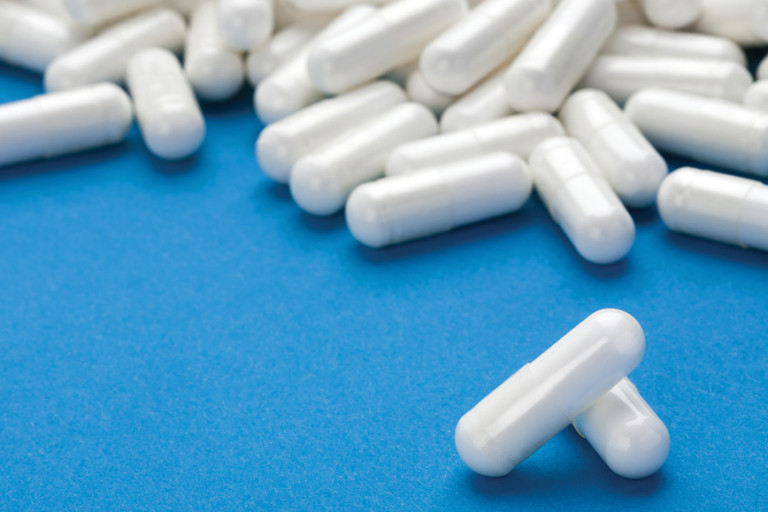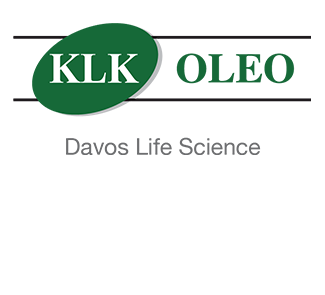Pre- and probiotics are shifting their positioning beyond gastro.
You’ve heard the words prebiotics and probiotics before, but are you clear on the difference? Typically found in some fruits and vegetables, prebiotics are made of complex carbohydrates that the body cannot digest. This energy instead acts as fuel for bacteria in the body. When you think about gut healthy foods like yogurt and other fermented products, you’re thinking of probiotics. These products contain bacteria and yeast to help the digestive system.
Taking a combination of the two (known as synbiotics when combined in one product) addresses imbalances in the gut created by unhealthy levels of bacteria.
Pre- and probiotics have been around for more than a century, but their once believed to be limited uses has expanded. A 2012 study by the National Center for Complementary and Integrative Health found that 4 million adults used probiotics for health. A quick search of the word “probiotic” on Amazon turns up more than 10,000 results. While a search on prebiotics results in more than 4,000 options.
Hannah Braye, registered nutritionist (DipCNM, BANT, CNHC) and senior technical advisor at Florida-based ADM Protexin, noted the shift in use beyond the typical digestive, intestinal and immune health focus. “The market is moving toward a ‘wellness’ positioning rather than remaining just in gastro. Weight control, mood, depression, oral health, fertility (both male and female), skin (including anti-aging/wrinkles), energy, endurance and sleep are all areas being worked on today.”
This has led to a much wider market for the potential of these supplements. Kim Shafer, CEO of Michigan-based Daily Body Restore, said she’s also seen growth in the number of products since she developed her company almost a decade ago after her child was diagnosed with Crohn’s disease.
“Pre/probiotics were available primarily in yogurts or capsules as supplements, but worldwide studies on individual strains and species have led to potential additional uses and now we find them in skin care lines, makeup, pet foods, nasal sprays, lotions, laundry detergent, in foods, supplements, beverages and the list goes on,” Shafer said.
What Changed?
It’s hard to pinpoint what exactly has changed. However there are a handful of factors that may have contributed to the piqued interest in the wellness scene.
One factor is likely the vast amount of people experiencing digestive health issues. According to a 2009 report by the National Commission on Digestive Disorders, in the U.S. about 70 million Americans are affected each year by digestive diseases at a cost that exceeds $100 billion in direct medical expenses. This can lead to a wide variety of symptoms including bloating, constipation and weight fluxuations.
“If pre- and probiotics can help us reduce even a portion of these costs, they are worth serious consideration,” said Jennifer Weinhardt, BS, MS and research and development specialist at Texas-based Bluebonnet Nutrition.
She added, in more recent years there have been numerous studies highlighting potential health benefits of pre- and probiotics. This may account for the trend toward adding these supplements as a necessary part of overall health and wellbeing, Weinhardt said.
On a similar note, technological advances, including the internet and online sales, has made it easier for consumers to do their own homework.
“I think consumers have more access to the latest research which is widely available online,” said Lily Berman Lopez, founder and CEO of Illinois-based Gut Garden. “People want to see that there are proven benefits to the ingredients that they are ingesting. They want to know why they should put specific strains of probiotics into their bodies, and modern technology helps them have access to this information.”
One longtime wholesale merchandise manager and e-commerce retailer agreed that the internet has largely broadened the landscape and popularity of these supplements.
“When a person looks up the product, they can look at everything,” he said. “They can see the actual image of the product and they can scroll down and see the origins of the product. They can see if there’s a presentation, they could see a video about the product, they can see the ingredients and they can even see peer rankings. They can see how the product was ranked among other items in the category. So they can do all these comparisons to make a decision.”
In addition to researching products, more consumers are also better understanding the effects of pre- and probiotics through their own experiences. Nowadays, it’s much easier to find and sample combinations of different strains on the market to find one that works best for that individual.
What Retailers Need to Know
Given this push toward wellness, it’s no secret that there is a plethora of pre- and probiotic supplements available on the shelves. Add e-commerce giants like Amazon to the mix and the options can be a bit overwhelming for the average consumer.
“This increased awareness and increased demand for probiotics has brought many new probiotic products and formulas into the industry, and not all of them have a proven track record,” said Murray Clarke, ND, DHom, LAc, founder and president of California-based Childlife Essentials.
Ross Pelton, RPh, PhD, CCN and science director for Texas-based Essential Formulas Incorporated (EFI), added that there are some misconceptions about what makes the best pre- and postbiotics. There are ideas floating around like the more probiotics the better or the one-size-fits-all thinking, that are simply not true.
“There is also a greater awareness of the importance of diversity and balance in a healthy microbiome. Probiotic products that contain very high quantities of one or several strains actually work against diversity and balance. The only way to create and maintain a diverse microbiome is to consume a diverse range of different kinds of fiber-rich foods … [which] promotes the growth and proliferation of a diverse range of bacteria.”
Putting aside products that have not been properly tested or the general confusion consumers face, most of the products on the market work. That’s what makes things even harder for consumers, said Jason Mitchell, ND and CEO of Kansas-based Probulin.
“Every single probiotic on the shelf is a good option because these products are important for digestive health. It’s not about good or bad. It’s about good, better, best and how do we find the very best product for that person.”
So what does that mean for retailers? It means they have options when it comes to marketing and selling pre- and probiotics. Below manufacturers provide their best merchandising tips to enhance sales:
• Promote pre/probiotics that have been studied so that consumers know not only what’s in them but also the benefits.
• Create seasonal displays (allergies, colds, back to school) to attract consumers to your supplement aisles.
• Make use of good lighting and signage so consumers can differentiate between packaging and brands.
• Focus on beneficial structure and function of applications. Weinhardt of Bluebonnet Nutrition elaborated on the importance of this point:
“Focusing on beneficial structure and function applications and creating visually appealing displays based on these can also accelerate product sales. For example, enhancing mood and emotional wellbeing, aiding in nutrient absorption, promoting immune health and relieving gastrointestinal distress are all enticing applications of probiotics.”
• Highlight clean label initiatives, such as allergen-free and non-GMO (genetically modified organism).
• Merchandise on an endcap with other probiotics.
• Offer a line drive on all products at the same time (20 percent off).
• Place probiotics among other digestive/immune health products and among vitamins.
• Narrow down the products you offer in this category, to make it less overwhelming for consumers.
• Educate retailers so they can better educate consumers.
This last point is one that came up again and again from manufacturers.
“Education is key,” said Jen Eiseman, associate marketing director of California-based Renew Life. “Consumers are confused and they are looking for help making sense of all the products and formulations on the market. It is a complex category because it is a complex product that is not a one-size-fits-all approach. Oversimplification does a disservice to the consumer, but too much information can be overwhelming.”
Weinhardt added that retailers should focus on building up their knowledge to educate consumers on a few of the key features most probiotics should contain. These include:
• Scientifically supported probiotic strains
• DNA verification
• Address the symbiotic relationships between various probiotic strains and blends
• Explain that probiotics are made to survive.
Retailers should keep in mind that most manufacturers offer support. Whether it be samples, display images, educational tools, etc. it is a good idea to use this support to enhance sales. Pelton of EFI provided a few examples of what his company offers to retailers.
“EFI education staff offers in-store, telephone and web-based trainings for retailers and their employees. An EFI representative is always available during working hours via phone or email to answer questions or address concerns that a retailer or one of their customers may have. EFI’s website, is a particularly informative resource for up-to-date material on all products, research, articles and relevant probiotic and omega-3 health information. Also, we send a quarterly e-newsletter written exclusively for retailers that incorporates content related to product discounts, show specials, pertinent company news and useful information applicable to your customers.”
What’s Next?
As the possibilities and limits of what pre- and probiotics can do continue to be tested, there are a handful of advancements making their way to the market.
One of these new areas of research studies the connection between the gut and the head. Braye from ADM Protexin pointed to a study that shows use of probiotics helped people who suffer from migraines.
“The probiotic group reported significantly decreased migraine frequency and intensity, in both chronic migraines and episodic migraines, compared to the placebo group,” Braye said. “In addition, the use of abortive medication and Migraine Disability Assessment Score (MIDAS) were significantly reduced in both groups compared to the placebo group, as was attack duration in the chronic migraine group. The study provides promising evidence that modulation of the gut microbiome may provide a safe, natural and effective alternative to conventional migraine treatment.”
In addition to this study, others have linked the continued intake of probiotics to enhance brain function in women and potential stress reduction.
Another noted move for the future comes from consumers’ better understanding of what is “natural” and “healthy.” A few years ago it was not uncommon to find additions like artificial sweeteners in pre- and probiotics. Lopez from Gut Garden, added that many of the new products coming out are unflavored and unsweetened. What’s more interesting is understanding consumers don’t mind, because they understand the importance of these supplements. They’re not looking for a “magic pill,” she pointed out.
Likely the most obvious prediction on where the market is headed, is that it will continue to grow. In 2018, about $96 million annual sales were generated for prebiotics and $2 billion to probiotics. If more research is done and the market continues to expand into the general wellness space, we should only expect to see more and more products, said Eisenman of Renew Life.
“As we continue learning more about the benefits of probiotic supplements through research we anticipate the category will grow,” she said. “But there will need to be a reckoning where poor quality products are weeded out to create a better consumer experience.”
The final area where the market seems to be headed is into the potential of postbiotics. There is not as much research available in this area, but it is one place some manufacturers are turning to complete the spectrum of digestive products made available for consumers.
“Postbiotic metabolites are now recognized to be the master health-regulating compounds in the body,” said Pelton. “They influence the function of every organ system in the body, especially the brain and the nervous system.” VR
For More Information:
ADM Protexin, www.bio-kult.com/
BlueBonnet Nutrition, www.bluebonnetnutrition.com
ChildLife Essentials, https://childlifenutrition.com/
Daily Body Restore, LLC, https://dailybodyrestore.com/
Essential Formulas Incorporated, https://essentialformulas.com/
Gut Garden, https://mygutgarden.com/
Renew Life, www.renewlife.com/
Probulin, https://probulin.com/




![[Extra! Extra!] Talking Gut-Brain Axis Nutrition With NOW’s Neil Levin](https://vitaminretailer.com/wp-content/uploads/2024/03/GutBrainAxis-300x131.jpg)







